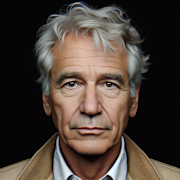Arrival (II) (2016)

In 2016, director Denis Villeneuve brought us the science fiction film “Arrival” which captivated audiences with its thought-provoking storyline and stunning visuals. The film follows linguist Louise Banks, played by Amy Adams, as she is tasked with deciphering the language of an alien race that has arrived on Earth. With its unique take on the genre and strong performances, “Arrival” quickly became a favorite among fans of science fiction.
Plot Summary
The film begins with the sudden appearance of twelve extraterrestrial spacecraft at various locations around the world. Louise is recruited by the US military to lead a team in establishing communication with the mysterious beings inside the spacecraft. As she works tirelessly to understand the intricacies of the alien language, she begins to experience vivid flashbacks of her daughter, who died at a young age from a rare illness.
As tensions rise between the different nations involved in the contact efforts, Louise must race against time to unravel the alien language and prevent a global catastrophe. Through her interactions with the aliens, Louise discovers that their language allows them to perceive time non-linearly, giving them the ability to see the past, present, and future simultaneously.
Themes
“Arrival” explores various themes such as communication, perception of time, and the nature of humanity. The film delves into the complexities of language and how it shapes our understanding of the world around us. Through Louise’s struggle to decode the alien language, the audience is taken on a journey of discovery and wonder as they witness the power of communication to bridge gaps between different species.
The non-linear perception of time presented in the film challenges our conventional understanding of cause and effect, raising profound questions about fate and free will. As Louise begins to experience glimpses of her future through her interactions with the aliens, she is forced to confront her own mortality and the choices she has made in her life.
Cinematography and Soundtrack
“Arrival” is visually striking, with its mesmerizing landscapes and otherworldly design of the alien spacecraft. The film’s cinematography, led by Bradford Young, creates a sense of awe and wonder as the camera glides through the spacecraft’s interior, highlighting the intricate symbols that form the alien language. The use of lighting and color enhances the emotional depth of the story, immersing the audience in Louise’s journey of self-discovery.
Jóhann Jóhannsson’s haunting score complements the film’s themes of mystery and introspection, adding an ethereal quality to the narrative. The music builds tension and emotion, underscoring the moments of quiet contemplation and revelation throughout the film.
Performances
Amy Adams delivers a powerful performance as Louise Banks, capturing the character’s emotional complexity and intellectual prowess. Adams portrays Louise with a quiet strength and vulnerability, allowing the audience to connect with her journey on a deeply personal level. Jeremy Renner and Forest Whitaker also shine in their roles, providing solid support to Adams’s commanding presence on screen.
The chemistry between Adams and Renner as they work together to decipher the alien language is palpable, adding an element of warmth and humor to the film’s otherwise serious tone. Their dynamic and nuanced performances anchor the emotional core of “Arrival”, elevating it beyond a typical science fiction film.
Conclusion
“Arrival” is a masterful work of science fiction that challenges viewers to reconsider their perceptions of language, time, and humanity. Through its captivating storyline, stunning visuals, and exceptional performances, the film leaves a lasting impact that lingers long after the credits roll. Denis Villeneuve’s direction, coupled with Amy Adams’s powerhouse performance, creates a cinematic experience that is both intellectually stimulating and emotionally resonant. “Arrival” is a rare gem in the science fiction genre, offering a profound meditation on the nature of communication and the power of human connection.

Desmond van der Walt
Journalist
More From Classics Authority Movies

Movie
Unveiling the Legend of Charlie Chaplin: The Silent Era Icon

Movie
Marilyn Monroe: The Ultimate Sex Symbol of Classic Hollywood

Movie
Midnight Cowboy (1969)

Movie
Cinematic Landscapes: The Use of Nature in Classic Film Settings

Movie
The Lion King (1994)

Movie
Cinematic Elegance: Grace Kelly's Enduring Influence on Classic Films





